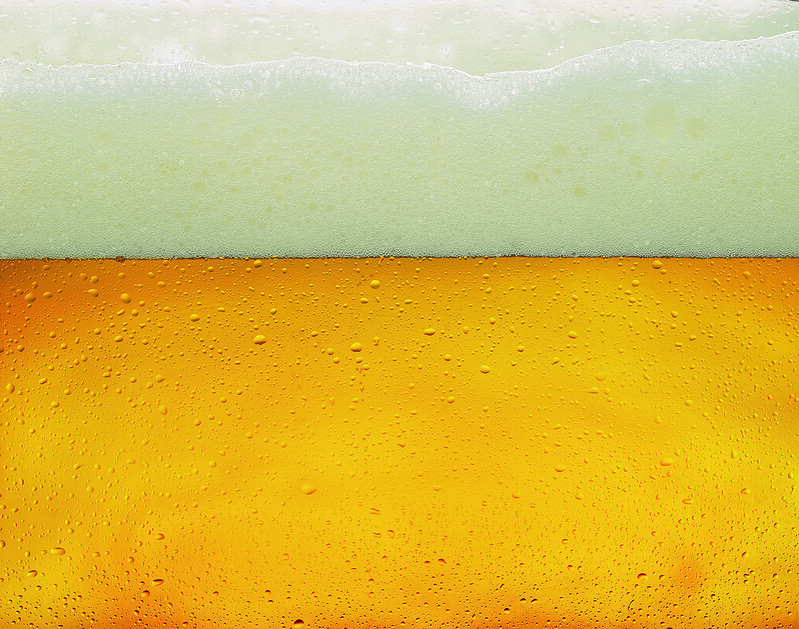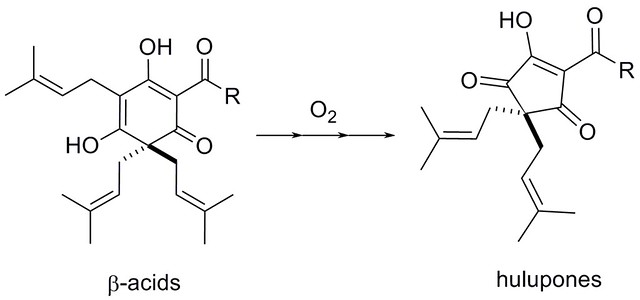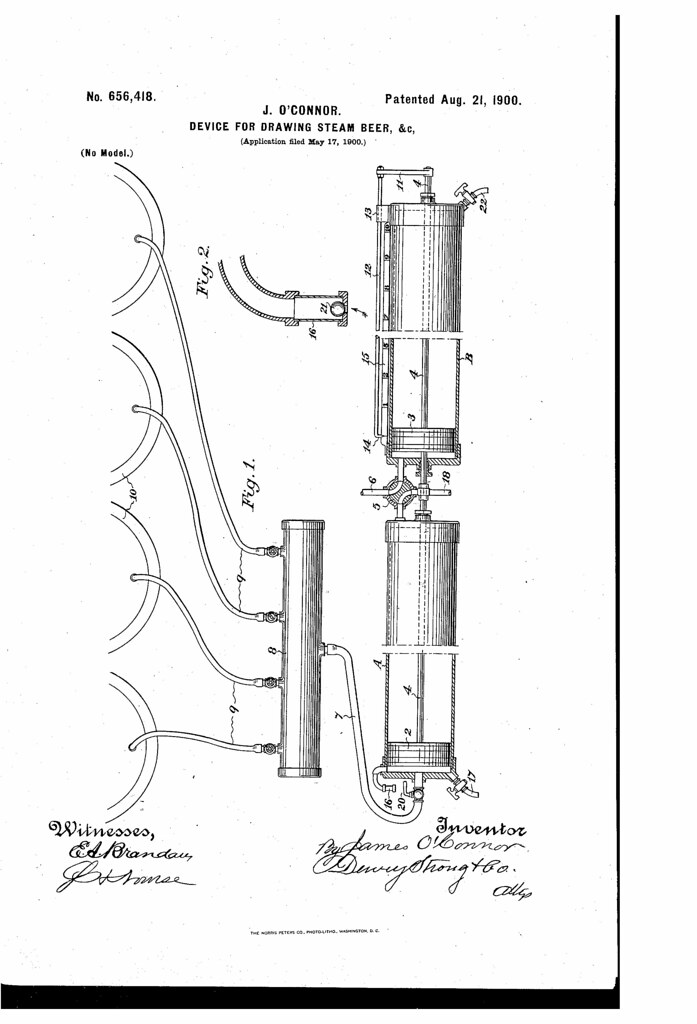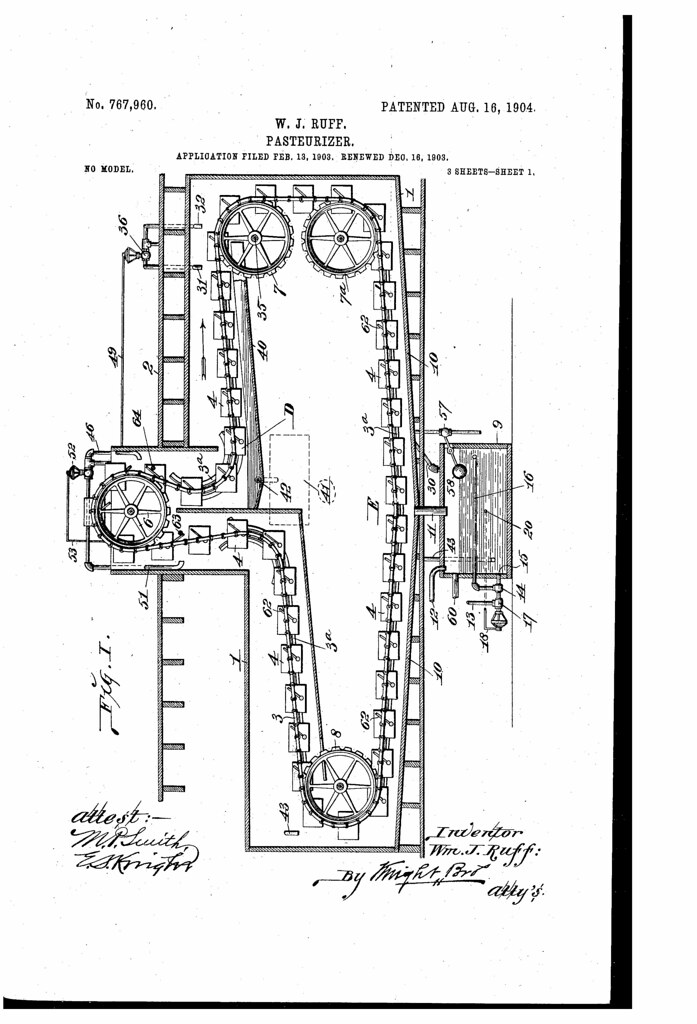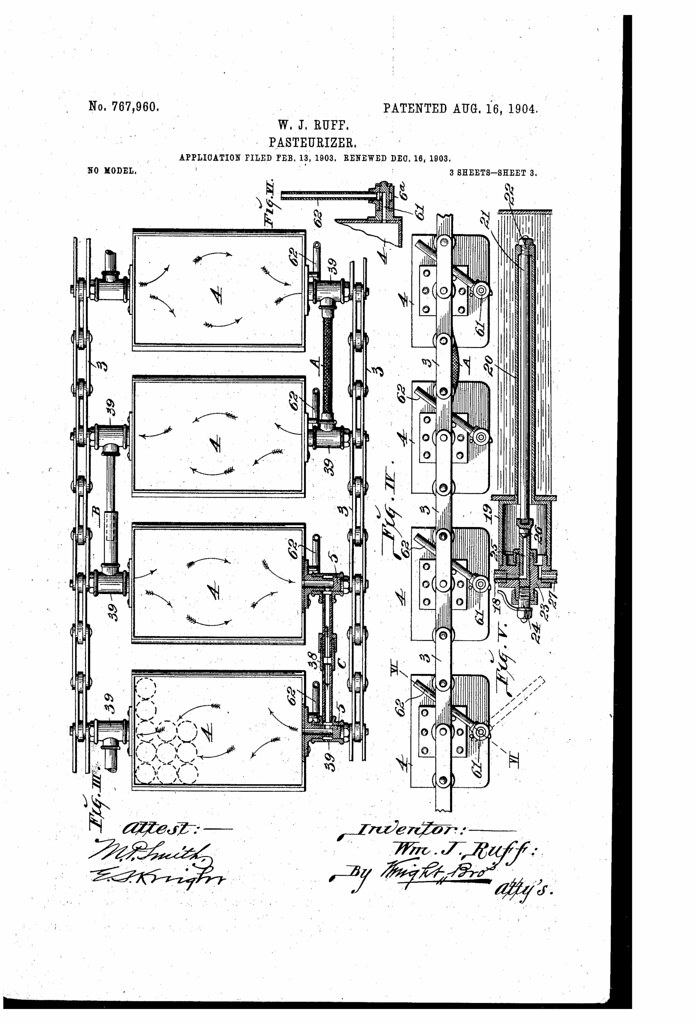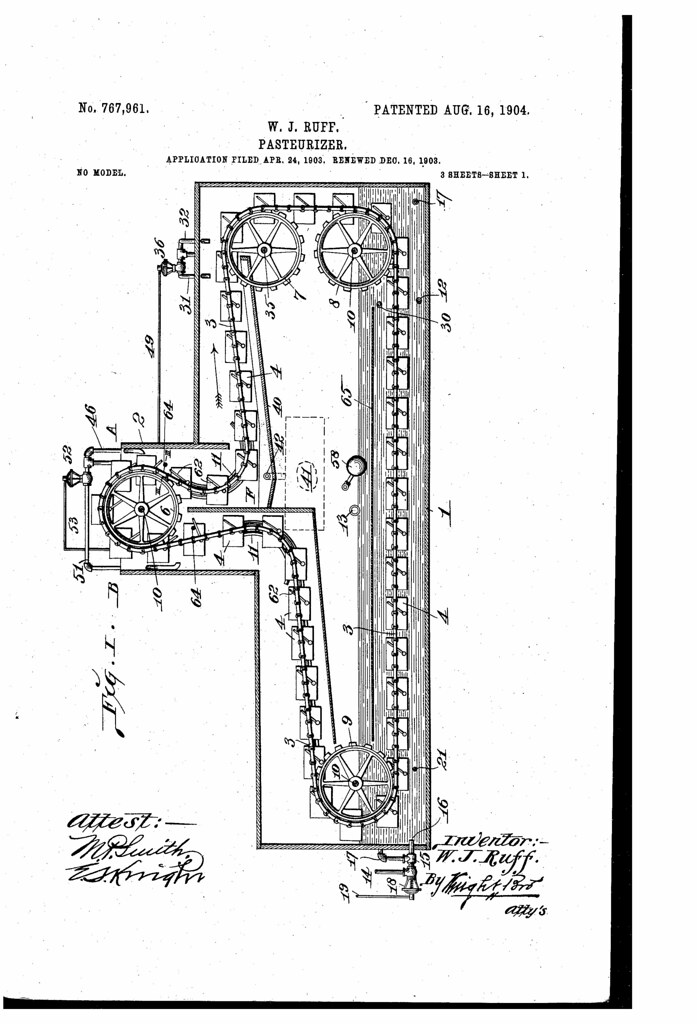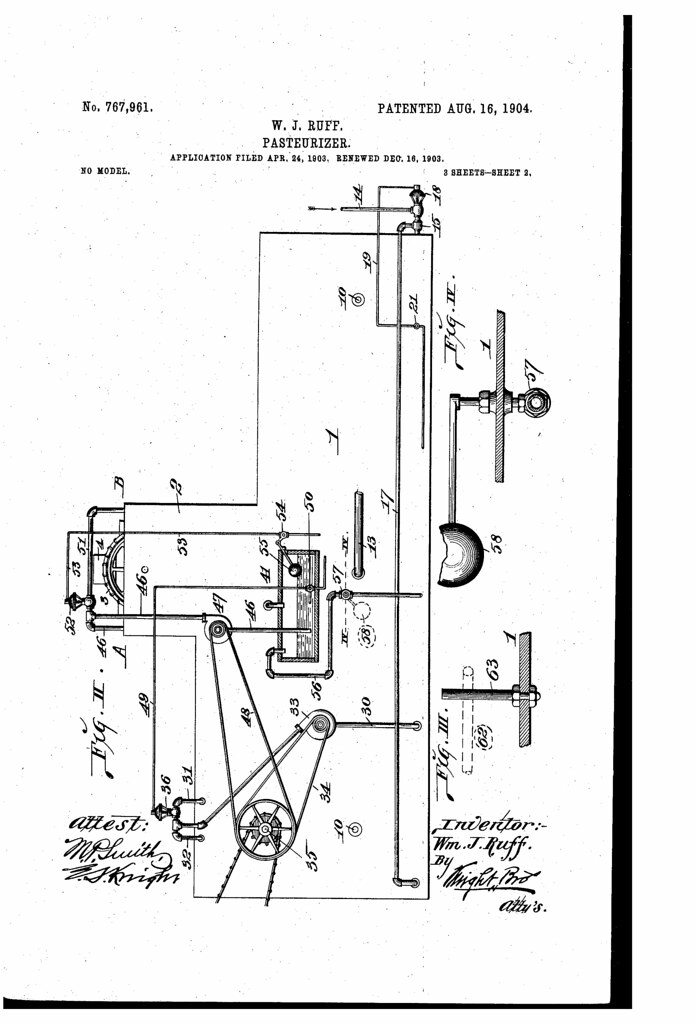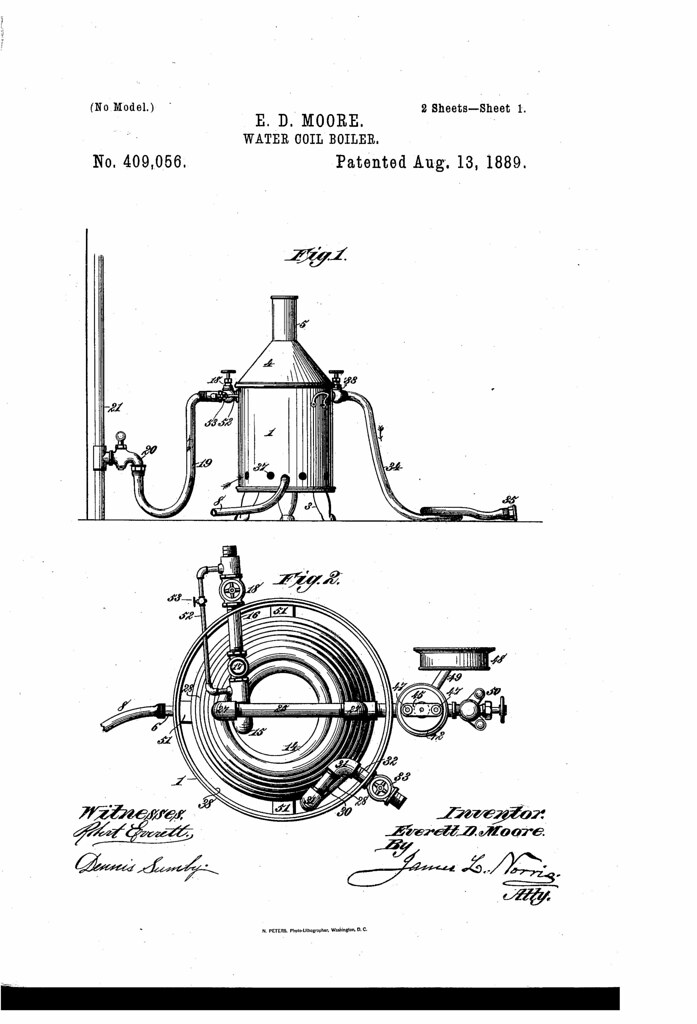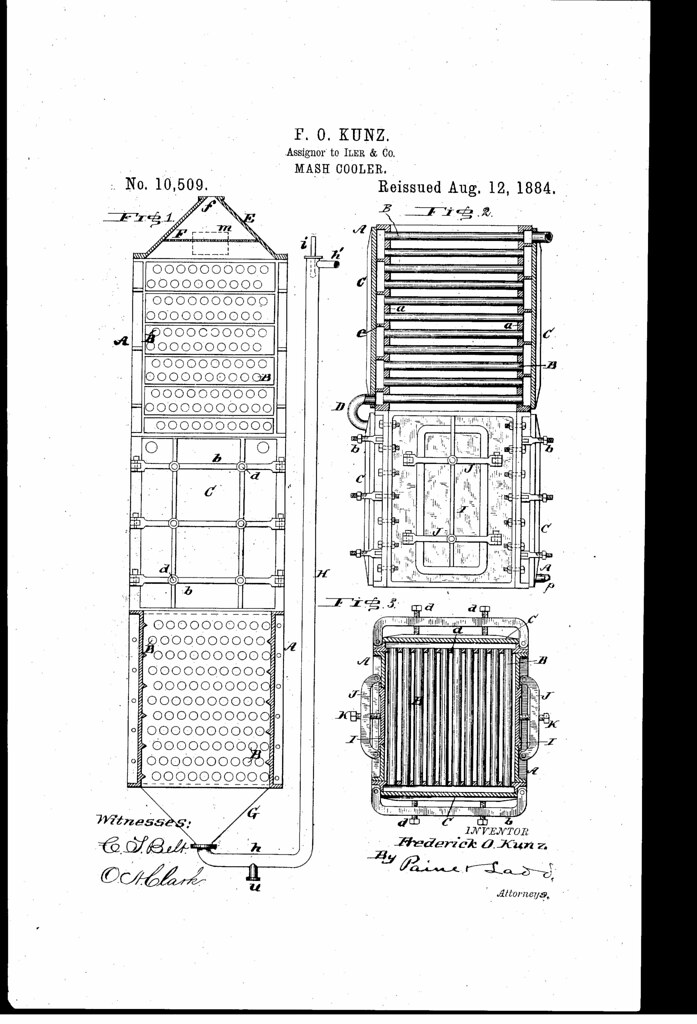
Today in 1970, US Patent 3526510 A was issued, an invention of John B. Bockelmann, Leonard Raymond and William Tirado, assigned to the F. & M. Schaefer Brewing Co. for their “Beer Foam Adhesion.” There’s no Abstract, although in the description it includes these claims:
The present invention relates to a novel method of enhancing so-called foam cling in certain beers or the like, as hereinafter more specifically set forth.
The use, as additive, of the heptyl ester or the octyl ester of para-hydroxy-benzoic acid, as such or in the form of an alkali metal salt or alkaline earth metal salt thereof, as a chemical pasteurizer for-“beer (cf. US. Pat. No. 3,232,766) has eliminated the necessity for conventional pasteurization as a means for preserving beer against undesired bacterial growth. However, the presence of the said additive in beer is bound up with a drawback in that the normal foam produced by the pouring of the beer into a glass no longer has the adhesion or cling which is generally associated with beer quality and which is produced by conventional pasteurized or draft beer.
Various agents are known for achieving good adhesion to the sides of the glass from beer containing the aforesaid additives. However, these are bound up with one disadvantage or another. Elimination of the additive agents results in a beer foam that rapidly wipes the glass clean, leaving no beer foam cling and imparting, from the standpoint of those who equate beer foam cling with good quality and good appearance, an inis a desideratum in the art of making paraban-pasteurized finished beer to provide an additive which is free from any disadvantage or undesired drawback and which imparts to the beer containing heptyl or octyl ester of para-hydroxy benzoic acid the capacity of forming, upon being poured into a glass, a normal foam of good stability and good cling (sometimes referred to as curtain formation).
A primary object of the present invention is the realization of the aforesaid desideratum. Briefly stated, this is achieved according to the present invention by the expedient of incorporating into beer which has been paraben-pasteurized an appropriate and effective amount of, as foam stabilizer and curtain former, one or more of .(a) sodium dioctyl sulfosuccinate (cf. US. Pat. No. 2,441,341); (b) sodium dihexyl sulfosuccinate;- (c) sodium diamyl sulfosuccinate; (d) disodium N-octadecyl sulfosuccinamate (cf. US. Pat. No. 2,252,401); and (e) tetrasodium N-(1,2-dicarboxyethyl)-N-octadecylsulfosuccinamate (cf. US. Pat. No. 2,438,092).
